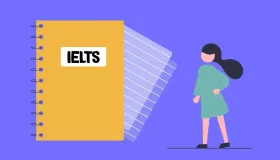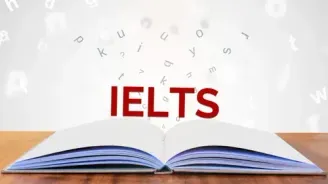Crop Circle Reading Answer Passage
Crop Circle Reading Answer Passage
Paragraph A. The crop circles phenomenon has puzzled and mystified humanity for many years. The designs just appear, placed carefully in fields of food grains. Some are larger than football fields and highly complex in design and construction. Others are smaller and more primitive. We call them to crop circles, but most of them are not circular. Some of them are elongated abstract designs, a few resemble insects or other known forms, and some are mixtures of lines, circles and other shapes melded into intricate patterns. Most become visible overnight, though it has been claimed that a few have appeared within half an hour in broad daylight.
Paragraph B. Crop Circles have appeared all over the world. About 10,000 instances from various countries have been reported in recent years. The first rash of crop circles appeared in Australia in December of 1973. A strange circular imprint appeared in a wheat field near Wokurna, a community southeast of Adelaide. Soon, seven swirled circles up to 14 feet in diameter appeared in an outfield nearby. In December of 1989, an amazing set of circles, ranging from a few inches to a few feet in diameter, appeared in the wheat field west of Melbourne. As many as 90 crop circles were found.
The best documented and largest modern spread of crop circles began in southern England during the summer of 1980. By the end of 1988, 112 circles had been formed. At that time, circles were being reported worldwide, 305 by the end of 1989. The total grew to an outstanding 1,000 newly–formed circles in 1990. In 1991, 200 to 300 circles were reported. Crop circles have been documented in over 30 countries, including Canada, the former Soviet Union, Japan and the United States.
Paragraph C. Nine out of ten circles remained simple, with broken stems flattened to the ground and swirled; the stalks around the circles remained completely erect. But over the years, crop circles have become much more geometrically intricate. Patterns involved multiple circles, bars, triangles, rings and spurs. Pictorial imagery also appeared. Reliable eyewitnesses have reported seeing unusual lights and hearing unidentifiable sounds\ while on an early morning walk in the countryside, where a crop circle showed later that day. High-pitch warbling noises have been recorded at the site of some crop circles.
On several occasions, a strange glow or a darker colouring has been seen in the sky over a crop circle. And in more than one instance, the electrical power of small planes flying overhead has been cut – off abruptly. While the casual energies do not seem to harm animals, or even insects as far as we can tell. A flock of birds have been seen to split apart and fly around the parameter rather than go directly over a crop of circle formation.
Paragraph D. Researchers have spent a great deal of time investigating different aspects of crop circles. They try to detect traces of human involvement in the circle – making, test the area of the circle itself for geographical anomalies and analyse the grain of the field both from within and outside the circles, searching for differences.
Paragraph E. Dr W.C. Levengood of BLT Research in Cambridge, Massachusetts, has analysed many grain samples and confirmed, time after time, significant changes at the cellular level of crop circle plants. The plants in front of the circles have elongated cells and blown outgrowth nodes. Seeds from the circle plants often show accelerated growth rates when they are sown, and in some instances, quite different – looking plants result.
In many instances it appears that vortex-like energy causes the plants to swirl down, flattening the design into the land. Whatever the energy is, it does not inhibit the plant’s growth.
They continue to show normal response to the sun, growing upward over several days following the appearance of the circle. Micheal Corost of Duke University found occasions of short-lived radionuclides in the top layer of soil in some of the formations. A British government laboratory found diminished nitrogen and decreased nematode population as well as the decreased water content in the soil formation. Researchers have discovered other anomalies as well, such as curious embedded magnetic particles and charred tissue. Some of the plant stalks within the circles show evidence of being exposed to rapid microwave heating.
Paragraph F. Scientists have attempted to explain crop circles as a result of natural processes. One popular theory accepted by many mainstream scientists and academics is known as ‘Plasma Vortex Theory’. Developed by Dr Terence Mearden, it theorises that electrified air on the side of the hills, becomes mini tornados and screws down onto the ground, creating the circles. The theory also holds that the electrified air would cause a light to appear above the circle and therefore account for UFO sightings. Although this theory has considerable support, it has come under fire because of the highly intricate and complex crop circle patterns that have appeared since 1991.
Another theory suggests that circles are all hoaxes or practical jokes. It is irrational to believe that all crop circles are fake or are for publicity. Many crop circles appeared long before the phenomenon pained large recognition from the media. Many crop circles show strange mathematical traits when analysed.
Paragraph G. This phenomenon is an enigma. Many dollars have been spent by researchers and their associations in an attempt to find a solution to this intriguing puzzle, which will continue to haunt humanity until an explanation is found.
Let’s explore the questions and answers of the Crop Circle reading answer passage.
Crop Circle Reading Answers with Sample Questions
Have you read the passage? Now, take the test and find Crop Circle Reading answers! Try to answer these questions by yourself before you sneak a peek at the answers given below.
Check Out Top 50+ IELTS Reading Practice Test Questions with Answers
Below are some top 50+ free IELTS Reading Practice test online questions with detailed answers to enhance your IELTS preparation online. We have provided sample passages for each test type for your reference.
- What Is Exploration Reading Answers
- Effects Of Noise Reading Answers
- The Discovery Of Baby Mammoth Reading Answers
- The Dead Sea Scrolls Reading Answers
- The Ring-Tailed Lemur Reading Answers
- Why We Need To Protect Polar Bears Reading Answers
- Nutmeg A Valuable Spice Reading Answers
- What Is Meaning Reading Answers
- Cutty Sark Reading Answers
- The Step Pyramid Of Djoser Reading Answers
- South Pole Adventurer Reading Answers
- The Future Of Work Reading Answers
- Ambergris Reading Answers
- Trees In Trouble Reading Answers
- Could Urban Engineers Learn From Dance Reading Answers
- The Flavour Of Pleasure Reading Answers
- The Value Of A College Degree Reading Answers
- Why You Should Delegate Tasks To Team Members Reading Answers
- Corporate Social Responsibility Reading Answers
- Forest Management In Pennsylvania USA Reading Answers
- Making Time For Science Reading Answers
- The Power Of Play Reading Answers
- Coastal Archaeology Of Britain Reading Answers
- How The Other Half Thinks Reading Answers
- Changes In Reading Habits Reading Answers
- The Forgotten Forest Reading Answers
- When Conversations Flow Reading Answers
- Attitudes Towards Artificial Intelligence Reading Answers
- The Ingenuity Gap Reading Answers
- A Bar At The Folies Reading Answers
- Booking A Wessex Cottages Holiday Reading Answers
- Sunset Tours Reading Answers
- Bird Migration Reading Answers
- Clutter Bugs Beware Reading Answers
- The Hidden Histories Of Exploration Exhibition Reading Answers
- Calisthenics Reading Answers
- Having A Lovely Time Reading Answers
- The Return Of Huarango Reading Answers
- Summer Activities At London Kew Gardens Reading Answers
- Computer Games For Preschoolers Reading Answers
- Extinct The Giant Deer Reading Answers
- Micro Enterprise Credit For Street Youth Reading Answers
- Plain English Campaign Reading Answers
- Glow Worms Reading Answers
- How To Prepare For An Interview Reading Answers
- Quiet Roads Ahead Reading Answers
- Sculpture Reading Answers
- Cornwall Reading Answers
- Latchkey Children Reading Answers
- Healthy Intentions Reading Answers
- Makete Integrated Rural Transport Project Reading Answers
- Allergy Testing Reading Answers
- Life Casting And Art Reading Answers
- Metropolis Movies Reading Answers
- The Bridge That Swayed Reading Answers
- The Discovery Of Uranus Reading Answers
- The Extraordinary Watkin Tench Reading Answers
- The Secret Schizoid Reading Answers
- The Sun A Mixed Blessing Reading Answers
- UK Companies Need More Effective Boards Of Directors Reading Answers
- Why Does Skin Wrinkle In Water Reading Answers
- Cleaner Abundant Ielts Reading Answers







